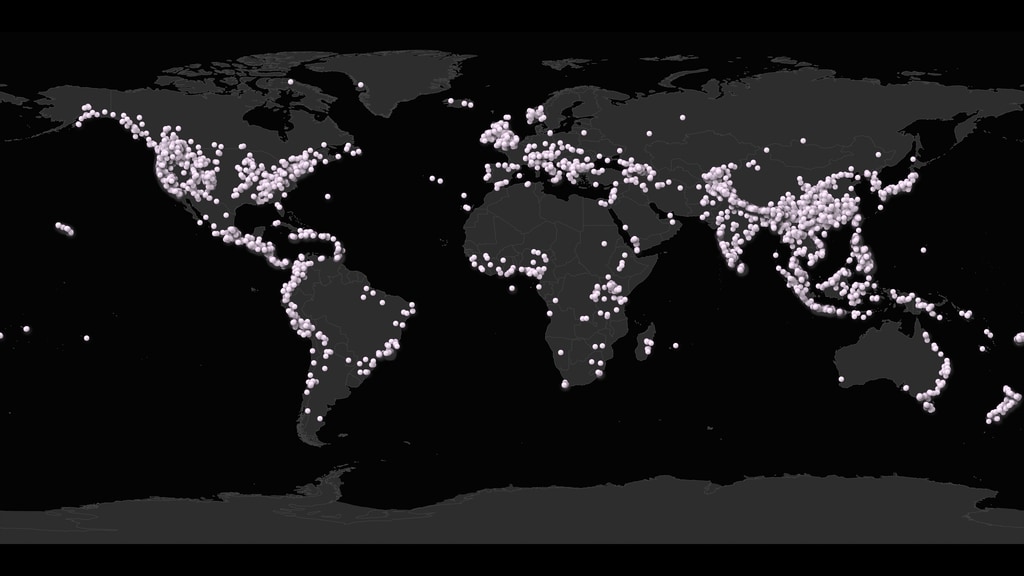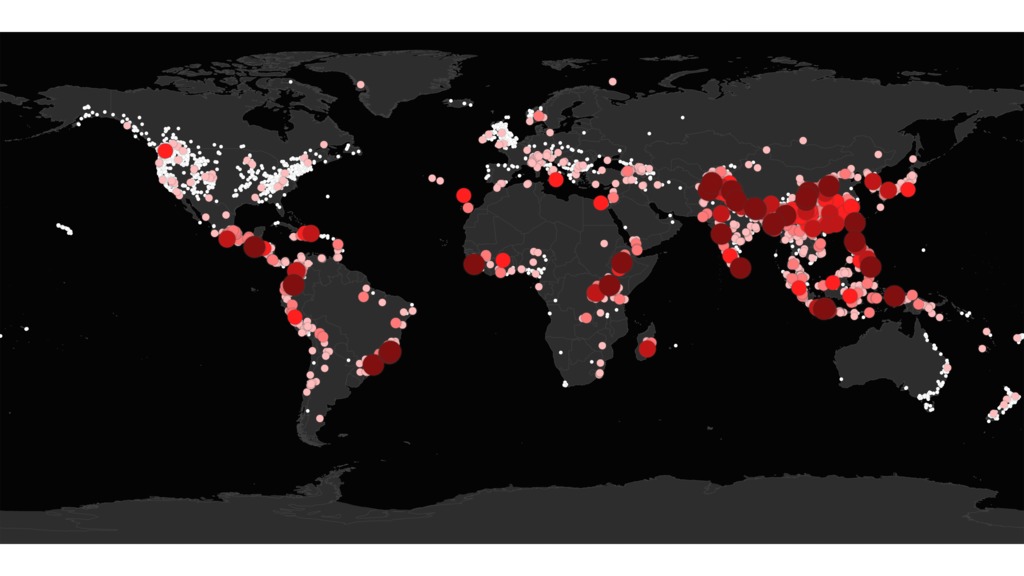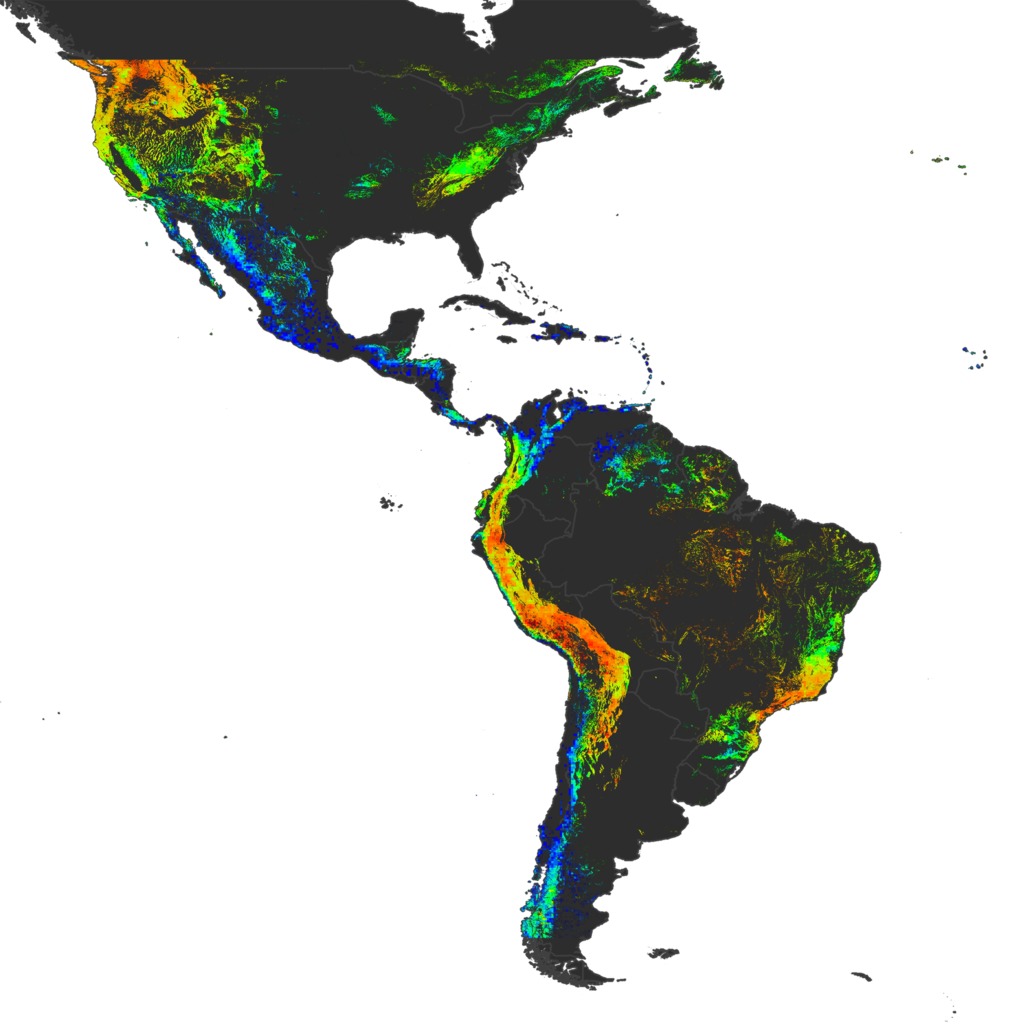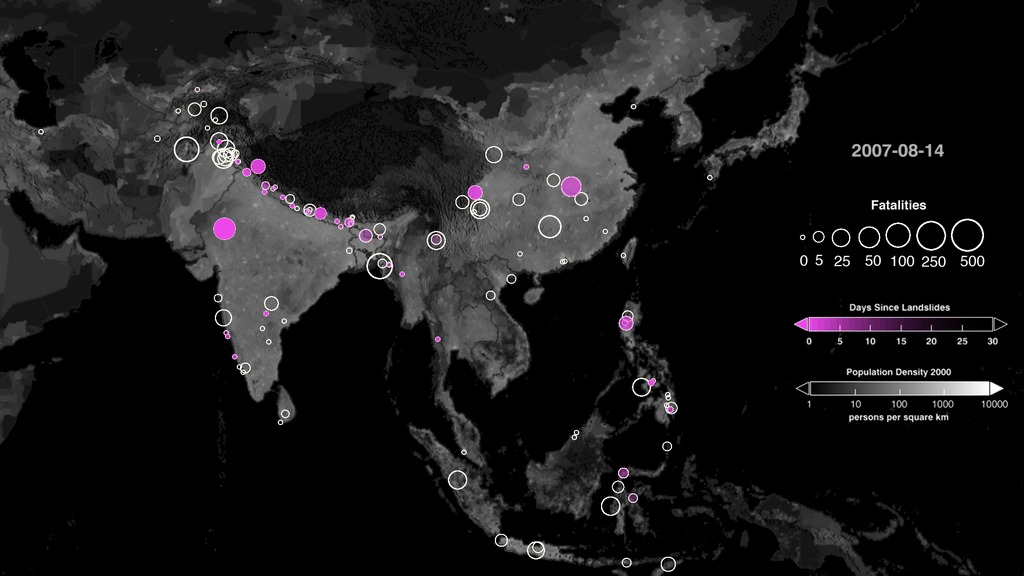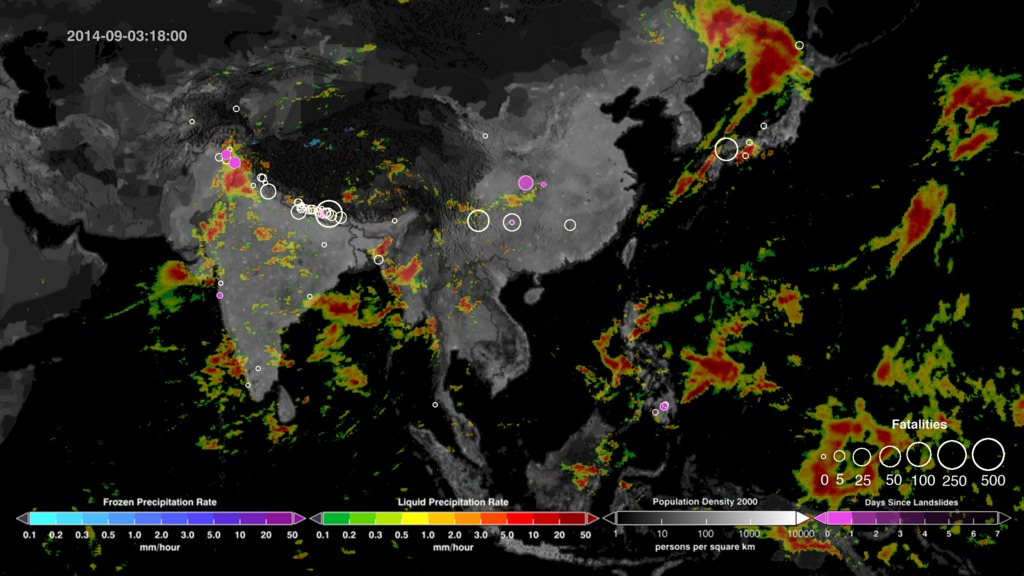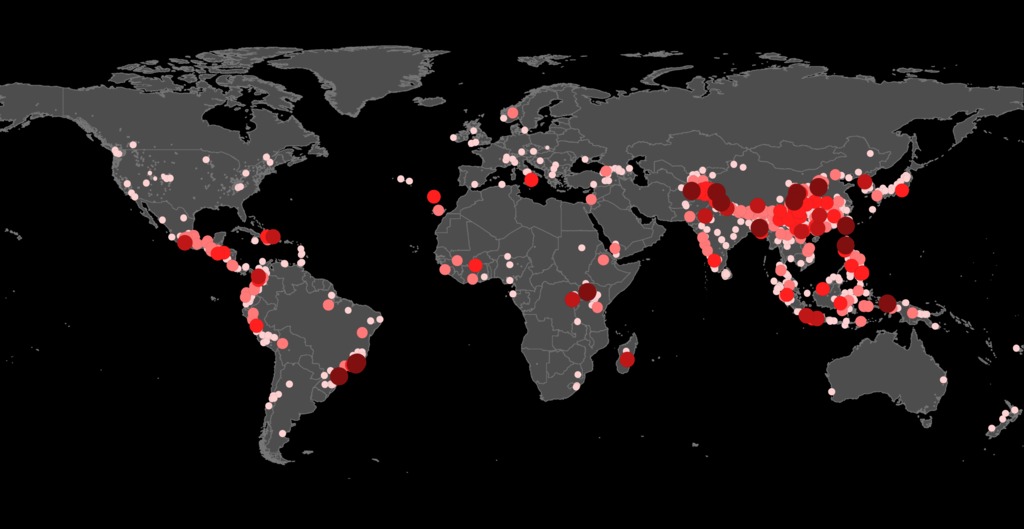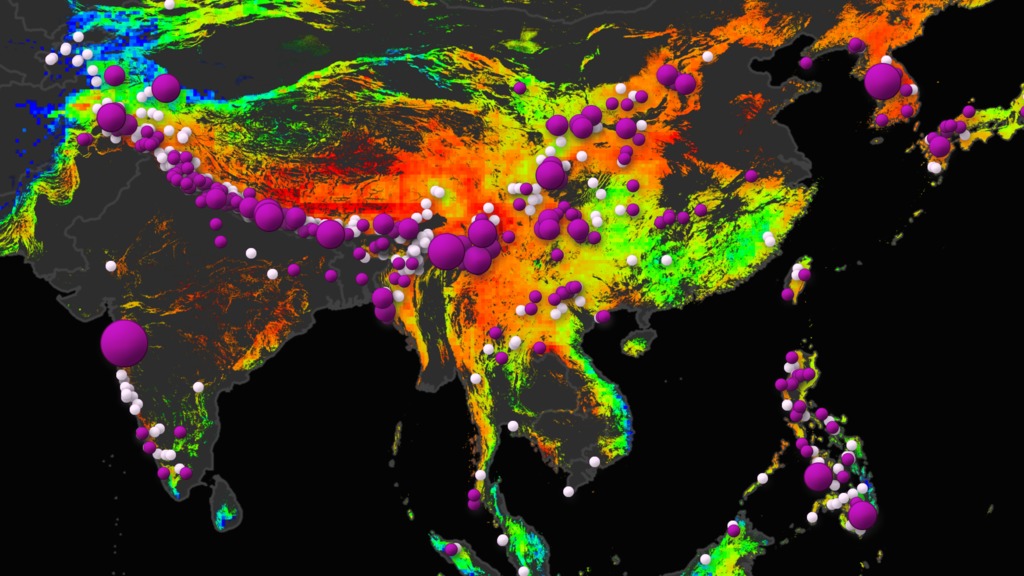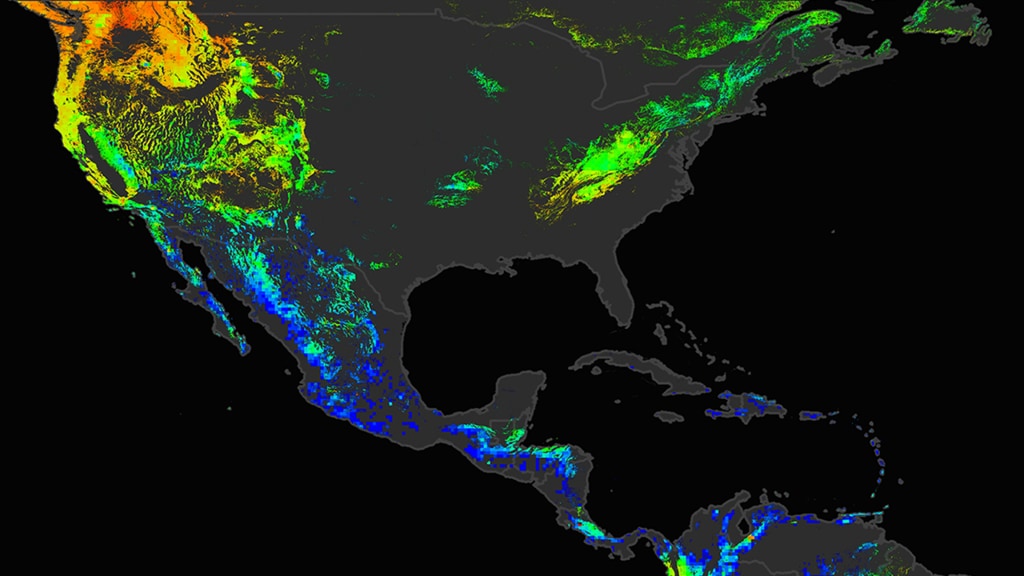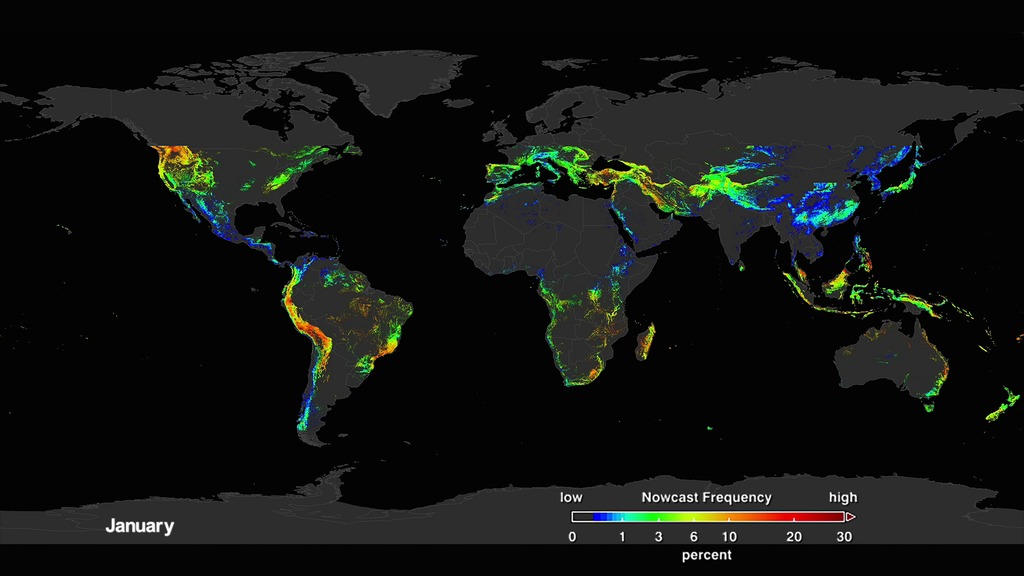Global Landslide Hazard Assessment Model (LHASA) with Global Landslide Catalog (GLC) data
Landslides occur when an environmental trigger like an extreme rain event, often a severe storm or hurricane, and gravity's downward pull sets soil and rock in motion. Conditions beneath the surface are often unstable already, so the heavy rains act as the last straw that causes mud, rocks, or debris- or all combined- to move rapidly down mountains and hillsides. Unfortunately, people and property are often swept up in these unexpected mass movements. Landslides can also be caused by earthquakes, surface freezing and thawing, ice melt, the collapse of groundwater reservoirs, volcanic eruptions, and erosion at the base of a slope from the flow of river or ocean water. But torrential rains most commonly activate landslides.
A new model has been developed to look at how potential landslide activity is changing around the world. A global Landslide Hazard Assessment model for Situational Awareness (LHASA) has been developed to provide an indication of where and when landslides may be likely around the world every 30min. This model uses surface susceptibility (including slope, vegetation, road networks, geology, and forest cover loss) and satellite rainfall data from the Global Precipitation Measurement (GPM) mission to provide moderate to high “nowcasts.” This visualization shows the landslide nowcast results leveraging nearly two decades of Tropical Rainfall Measurement Mission (TRMM) rainfall over 2001-2016 to identify a landslide climatology by month at a 1 km grid cell. The average nowcast values by month highlight the key landslide hotspots, such as the Southeast Asia during the monsoon season in June through August and the U.S. Pacific Northwest in December and January.
Overlaid with these nowcasts values are a Global Landslide Catalog (GLC) was developed with the goal of identifying rainfall-triggered landslide events around the world, regardless of size, impact, or location. The GLC considers all types of mass movements triggered by rainfall, which have been reported in the media, disaster databases, scientific reports, or other sources. The visualization shows the distribution of landslides each month based on the estimated number of fatalities the event caused. The GLC has been compiled since 2007 at NASA Goddard Space Flight Center and contains over 11,000 reports and growing. A new project called the Community the Cooperative Open Online Landslide Repository, or COOLR, provides the opportunity for the community to view landslide reports and contribute their own. The goal of the COOLR project is to create the largest global public online landslide catalog available and open to for anyone everyone to share, download, and analyze landslide information.
More information on this system is available at: https://landslides.nasa.gov
The Global Landslide Catalog is currently available here: https://catalog.data.gov/dataset/global-landslide-catalog-export

This set of 12 still images show the potential landslide by month averaged over the last 15 years as evaluated by NASA's Landslide Hazard Assessment model for Situational Awareness. The still images are provided in two resolutions: 1920x1080 and 9600x5400.

This set of 12 still images showcases the landslide climatology by month overlaid with the distribution of landslides each month based on the estimated number of fatalities the event caused. The estimated number of fatalities is based on values from the Global Landslide Catalog (GLC) for the period 2007-2017.

This set of 12 still images provides the months layer in two resoltutions: 1) 1920x1080 and 2) 9600x5400.

This set of 12 still images provides the estimated number of fatalities layer by month. The number of fatalities are based on values from the Global Landslide Catalog (GLC).

Legend for the reported landslide fatalities. This legend should accompany the fatalities layer (GLC data) of size 1920x1080

Colorbar for the landslide climatology.

Using the Global Landslide Catalog, a map, including a legend, has been produced to show the distribution and number of reported fatallities associated with approximately 10,804 rainfall-triggered landslides from 2007-2017. Out of the 10,804 reported rainfall-triggered landslides, 8,369 incidents had zero fatalities. White dots represent incidents with zero reported fatalities. Purple dots (small to large) represent incidents with fatalities in the range of 1-5000.

Using the Global Landslide Catalog, a map has been produced to show the distribution and number of reported fatallities associated with approximately 10,804 rainfall-triggered landslides from 2007-2017. Out of the 10,804 reported rainfall-triggered landslides, 8,369 incidents had zero fatalities. White dots represent incidents with zero reported fatalities. Purple dots (small to large) represent incidents with fatalities in the range of 1-5000.

Using the Global Landslide Catalog, a map has been produced to show the location of 8,369 zero reported fatalities associated with rainfall-triggered landslides for the period 2007-2017.

This is a legend that accompanies the map that shows the distribution and number of fatallities associated with rainfall-triggered landslides in the Global Landslide Catalog for 2007-2017. This legend should accompany the map of size 3840x2160.

Using the Global Landslide Catalog (GLC), a world map has been produced to show the location of 10,804 reported landslides triggered by rainfall for the period 2007-2017. In this version, all landslide locations have the same visual treatment without pointing out which ones had fatalities. This version has been created for kids and educational purposes.

This image contains all 10,804 landslide locations with a transparent background.
Using the Global Landslide Catalog (GLC), a map has been produced to show the location of 10,804 reported landslides triggered by rainfall for the period 2007-2017. In this version, all landslide locations use the same visual treatment without pointing out which ones had fatalities. This version has been created for kids and educational purposes.

World flat map to serve as a background when overlaying the image with transparency provided above.
For More Information
See the following sources:
Credits
Please give credit for this item to:
NASA's Scientific Visualization Studio
-
Visualizers
-
Helen-Nicole Kostis
(USRA)
- Horace Mitchell (NASA/GSFC)
-
Greg Shirah
(NASA/GSFC)
-
Helen-Nicole Kostis
(USRA)
-
Producers
- Ryan Fitzgibbons (USRA)
- Joy Ng (USRA)
-
Scientists
- Dalia B Kirschbaum (NASA/GSFC)
- Thomas A. Stanley (USRA)
-
Technical support
- Ian Jones (ADNET Systems, Inc.)
- Laurence Schuler (ADNET Systems, Inc.)
-
Project support
- Joycelyn Thomson Jones (NASA/GSFC)
- Leann Johnson (Global Science and Technology, Inc.)
- Eric Sokolowsky (Global Science and Technology, Inc.)
Missions
This page is related to the following missions:Related papers
Dalia Kirschbaum and Thomas Stanley, Satellite-Based Assessment of Rainfall-Triggered Landslide Hazard for Situational Awareness, Earth's Future, Volume 6, Issue 3, March 2018, Pages 297-616, ISSN 2328-4277, doi.org/10.1002/2017EF000715
Dalia Kirschbaum and Thomas Stanley, Satellite-Based Assessment of Rainfall-Triggered Landslide Hazard for Situational Awareness, Earth's Future, Volume 6, Issue 3, March 2018, Pages 297-616, ISSN 2328-4277, doi.org/10.1002/2017EF000715
Datasets used
-
GLC (Global Landslide Catalogue)
ID: 872 -
Global Landslide Model (Global Landslide Hazard Assessment for Situational Awareness (LHASA))
ID: 1001https://pmm.nasa.gov/applications/global-landslide-modelThe global Landslide Hazard Assessment for Situational Awareness (LHASA) model is developed to provide situational awareness of landslide hazards for a wide range of users. Precipitation is
See all pages that use this dataset
Note: While we identify the data sets used on this page, we do not store any further details, nor the data sets themselves on our site.
Release date
This page was originally published on Thursday, April 26, 2018.
This page was last updated on Sunday, February 2, 2025 at 12:10 AM EST.
